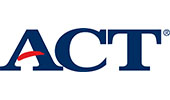
Measuring Team Dynamics & Inclusiveness
Challenge
Despite a strong research and data culture, ACT faces challenges in measuring internal inclusiveness and team dynamics. Our goal is to gather real-time, empirical data that is bite-size enough to enable responsive action from leaders and team members. This means the process must be simple and efficient, yet robust enough to inform both work on team effectiveness and organization-wide culture efforts.
Actions
We collaborated with our internal Survey Research team to design our own group dynamics instrument. The goal was a customized solution that met the following requirements: meaningful to ACT, includes key aspects of group dynamics, and is theoretically sound.
Our instrument was informed by the following:
- ACT’s past survey results and culture data
- Insights and needs identified via culture focus groups
- ACT’s Guiding Principles
- Group dynamics and inclusion literature
The instrument has five constructs (Alignment, Collaboration, Commitment, Reward, and Trust) with each construct containing five items, resulting in a 25-item survey. We use the survey findings in conjunction with team effectiveness sessions, new leader assimilations, and both organization-wide and area-level pulse surveys. In addition to these surveys, we also conduct cross-functional focus groups, area focus groups, panel discussions, and/or working sessions to gather qualitative feedback.
Outcomes
This approach facilitates smaller changes that are reinforced over time, as opposed to one-and-done events. In association with team effectiveness sessions, we have seen measurable increases in team alignment, role clarity, and trust. As a result of real-time data and responsive action planning, changes are realized more quickly. Leaders and team members also see measurable results on a more frequent basis.
Quote
Numbers are useful, but only if they are granular enough to measure a specific “thing” and recent enough to still apply. By focusing on bite-size, real-time information, we can collect data quickly, rapidly understand the results, and then act – fast – so that the problem we’re solving still resembles the one we originally asked questions about.